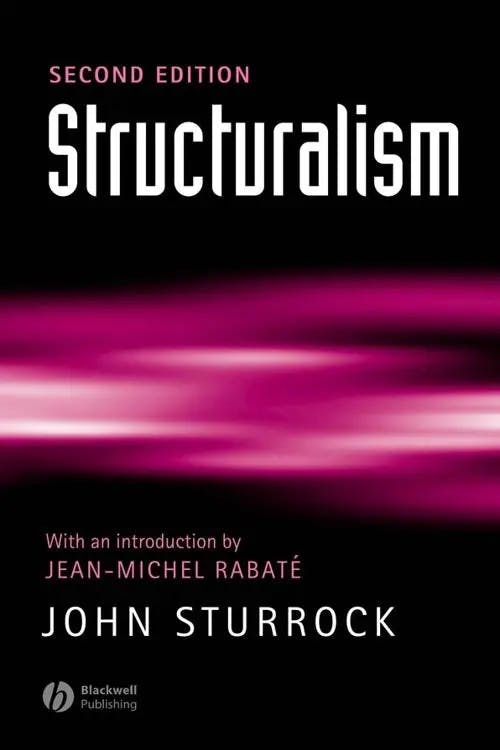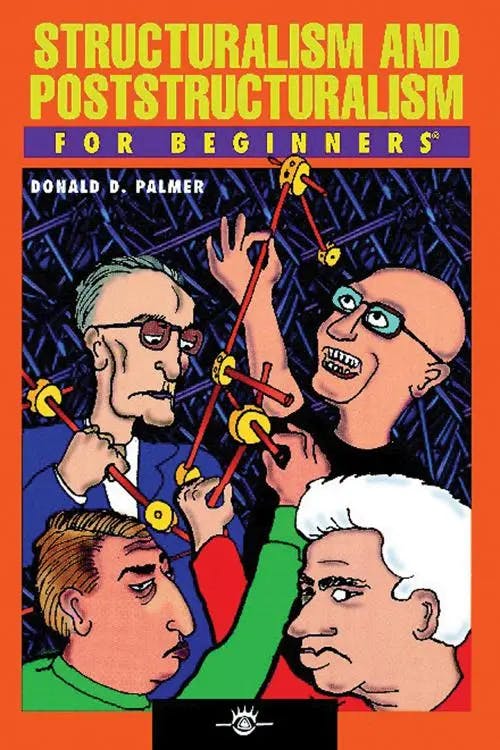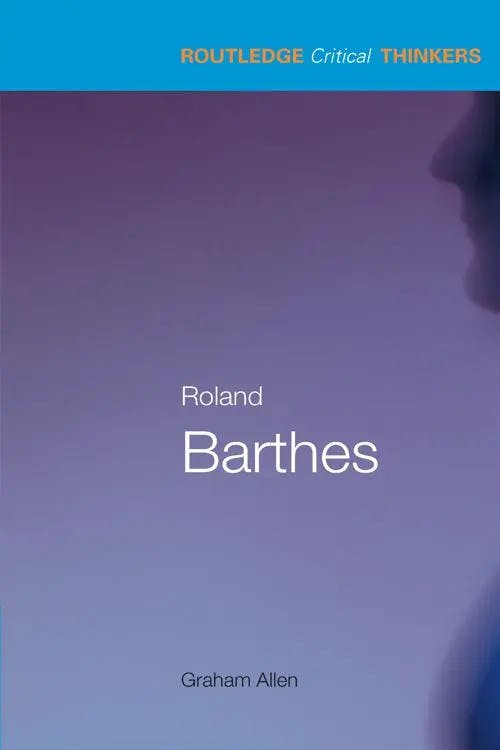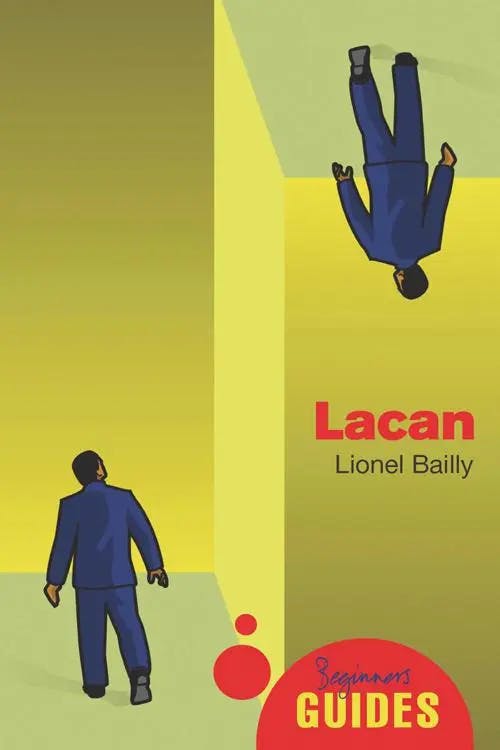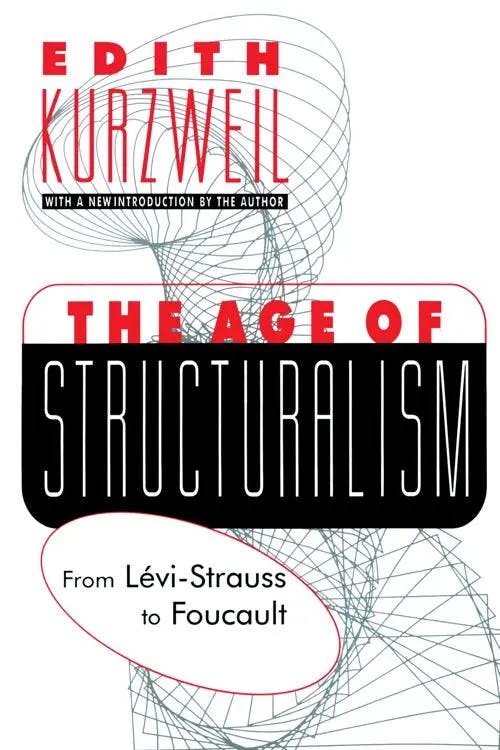What is Structuralism?
MSt, Women's, Gender & Sexuality Studies (University of Oxford)
Date Published: 19.07.2023,
Last Updated: 14.09.2023
Share this article
Defining structuralism
Structuralism is a twentieth-century intellectual movement aiming to identify and describe underlying systems of language, culture, literature, and more. Structuralism seeks to demonstrate that, beneath disparate practices and expressions, there lie universal laws and common principles.
The structuralist approach is organic and relational. For structuralists, the constituent units of reality and knowledge can only be understood in relation to a larger system. In fact, nothing exists outside of the system; everything is defined by the structures in which it is situated. There are no “things,” only relationships.
Structuralism differs from existentialism, a significant earlier intellectual movement. While existentialists emphasize individualism and the absence of universal laws, structuralists see individuals as not only entangled in systems but, in structuralism’s most extreme forms, unable to resist or change them.
Indeed, structuralism is not particularly interested in changes over time. While structuralists understand that systems can evolve, they study them as though they are static, frozen in time. Structuralism thus adopts a synchronic, or ahistorical, approach.
John Sturrock likens structuralism to orthodox scientific approaches. Like the task of an anatomist or ecologist, who always considers how their objects of study fit into larger systems (e.g., the circulatory system in the body, a particular habitat’s ecosystem),
The task of the Structuralist is thus, first to determine the elements out of which the structure in question is formed - easy enough in the case of an anatomy, not easy at all as we know to our cost in the case of an economy or a weather-system; and then to try to understand the often very complex modes of their interaction. (2008)
John Sturrock
The task of the Structuralist is thus, first to determine the elements out of which the structure in question is formed - easy enough in the case of an anatomy, not easy at all as we know to our cost in the case of an economy or a weather-system; and then to try to understand the often very complex modes of their interaction. (2008)
This approach may be familiar in the sciences, but it was novel for humanists and social scientists. For example, rather than treating a story as a work of self-expression and artistic ingenuity, strict structuralists approach the text as part of a larger system of linguistic, literary, and cultural signs, the product and reflection of these systems as much as — if not rather than — its creator’s mind. One major offshoot of this approach to literature is narratology, the study of the form and function of narrative, which has been influenced by prominent structuralists and poststructuralists. (See our guide “What is Narratology?” for more.)
While this approach certainly attracts criticism — particularly from those who feel structuralism undermines art’s aesthetic and individualized merits — many structuralist ideas have permeated academic thought and critical theory. This guide will acquaint you with some key structuralist figures and their theories.
Saussure and Peirce: structural linguistics and semiotics
Ferdinand de Saussure (1857–1913) is considered a founder of structuralism, although this attribution and his influence came long after his death. His most significant text, Course in General Linguistics (2011), was derived from lectures collected by his students and first published three years after his death; no published translation appeared until 1959.
Nonetheless, Saussure’s theories of linguistics and creation of semiotics (or semiology, as he called it, meaning the study of signs) became the foundation for other branches of structuralism including anthropology and literary theory.
Sign, signifier, signified
Saussure’s core contribution to structuralism is his theory of the sign, signifier, and signified. For Saussure, words do not put a name to a thing; instead, they combine a concept with a sound-image. The sounds, syllables, and letters that make up a certain word (its sound-image) designate not a specific thing, but an abstraction of that thing. For example, when you read or hear the sound-image “tree,” you imagine a concept of a tree; you do not see a literal, specific one. Saussure writes,
I call the combination of a concept and a sound-image a sign, but in current usage the term generally designates only a sound-image, a word, for example (arbor, etc.). One tends to forget that arbor is called a sign only because it carries the concept “tree,” with the result that the idea of the sensory part implies the idea of the whole. (2011)
Ferdinand de Saussure
I call the combination of a concept and a sound-image a sign, but in current usage the term generally designates only a sound-image, a word, for example (arbor, etc.). One tends to forget that arbor is called a sign only because it carries the concept “tree,” with the result that the idea of the sensory part implies the idea of the whole. (2011)
To emphasize this relationship, Saussure calls the sound-image (the word) the “signifier” and the concept (its referent) the “signified.” The letters T-R-E-E signify the concept of a tree. This combination is a sign.
Saussure notes that the relationship between the signifier and the signified is arbitrary. That is, nothing about a tree indicates that it should be represented by particular sounds, syllables, or letters. “Arbitrary” does not mean that the choice is left to the speaker: “the individual does not have the power to change a sign in any way once it has become established in the linguistic community” (Saussure, 2011). Instead, Saussure means the relationship is “unmotivated,” there is no “natural connection” between the signifier and signified (2011). The arbitrary nature of signs is why different languages have different words for essentially the same concept (tree, arbre, árbol, baum).
Saussure further proves that not only does the signifier change across language systems but the signified itself can also change. When hearing the word tree, a person who grew up near the redwoods of the Pacific Northwest of the U.S. likely pictures something different than someone who grew up in the Sahara Desert or in Japan.
Some words are partially motivated. For example, onomatopoeia are in part derived from the sound they aim to describe. However, different languages have different words for the same sound — English dogs say “bow-wow” while French dogs say “ouaoua” — so onomatopoeia are still shaped by the language system in which they arise.
Types of signs
Working on the other side of the Atlantic, Charles Peirce (1839–1914) was another important figure in early semiotics. Peirce named three kinds of signs based on the relationship between the signifier and signified: symbol, index, icon. In the case of the symbol, there is no connection between the expression and its content; it is “unmotivated,” in Saussure's terms. Its meaning is learned but not derived from the object itself.
An index, Peirce explains, “necessarily has some quality in common with the Object, and it is in respect to these that it refers to the Object” (The Essential Peirce, Vol. 2., 1998). To use Sturrock’s example, a “ring round the sun” is a sign of rain. This sign is “naturally” derived from what it represents, but it is still open to interpretation based on cultural norms, individual knowledge, and the reason for which an individual may interpret the sign — “for practical reasons, if he is a farmer, or for more loosely communicative ones, to display perhaps an acquaintance with weather-lore” (Sturrock, 2008).
An icon, also called a likeness, directly imitates what it represents. A painting or photograph of a tree is not a tree, but it signifies a tree through imitation. This example helps us recognize that signs need not be linguistic; semiotics addresses signs that are verbal, pictorial, gestural, and more.
La parole and la langue
To better describe language as a system, Saussure draws a distinction between la langue (language) and la parole (word). Parole is the individual action of speech (whether in written or verbal form), whereas langue describes the full catalog of options and rules, the language system at large. As Sturrock writes,
If langue is a structure then parole is an event. The first is an abstraction, the second is real. Without the events there would be no way in which we could know of or investigate the structure, and without the structure the event would be formless and without meaning: the two are wholly interdependent. (2008)
Parole is necessarily individual, the personal action of speech, whereas langue is collective. Of language, Saussure writes,
It is a storehouse filled by the members of a given community through their active use of speaking, a grammatical system that has a potential existence in each brain, or, more specifically, in the brains of a group of individuals. For language is not complete in any speaker; it exists perfectly only within a collectivity. (2011)
Saussure’s lexicon is the foundation upon which structuralism rests, and the concepts of sign-systems and semiotics continue to shape studies of language, literature, and culture today.
Lévi-Strauss: structural anthropology
Perhaps the most well-known structuralist, Claude Lévi-Strauss (1908–2009) helped the movement gain prominence in France and created structural anthropology.
Before Lévi-Strauss, anthropology was dominated by empiricism. Empirical anthropologists drew conclusions strictly from observed or documented evidence, avoiding large generalizations or cross-cultural analysis. Conversely, structural anthropologists believe that, because all cultures are constructed by humans, they must have underlying similarities. As Sturrock explains,
Where the empiricist tradition accumulates data which seem to confirm the endless diversity of social practices, between one society and another, Lévi-Strauss claims that the same data can be used, in ever more abstract ways, to reveal the fundamental unity of all cultures. He represents Structuralism in its most extreme will to universalism. (2008)
Structural anthropology is influenced by functionalism, an earlier anthropological movement which aimed to explain behaviors through the social function they served. Structural anthropology also examines practices synchronically and connects them to shared community norms. However, Lévi-Strauss disagrees that all social phenomena must serve a purpose. Some behaviors have no utility, but their significance is revealed in the context of a cultural system of meaning. Lévi-Strauss thus uses Saussure’s theory of language — the parole only makes sense within the langue — as a model for his anthropology: just as language follows governing rules of signs, grammar, and syntax, society and culture function in a similarly systematic way.
To see this theory at work, consider one of Lévi-Strauss’s best-known arguments: the reason for the incest taboo, or the prohibition of sexual intercourse with near kin. Lévi-Strauss draws upon Marcel Mauss’s The Gift (1925, [2020]), which argues that all societies are organized around the act of gift exchange, producing systems of mutual obligation. As Donald D. Palmer explains, Lévi-Strauss applies this theory
to the exchange of words, but also to the exchange of women (fathers and brothers “marrying off” their daughters and sisters). The near universality of the incest taboo is explained in terms of this exchange, which generates certain necessary kinship systems. Incest must be excluded from all such systems because it negates the establishment of social alliances. (2007)
Donald D. Palmer
to the exchange of words, but also to the exchange of women (fathers and brothers “marrying off” their daughters and sisters). The near universality of the incest taboo is explained in terms of this exchange, which generates certain necessary kinship systems. Incest must be excluded from all such systems because it negates the establishment of social alliances. (2007)
The incest taboo, Lévi-Strauss argues, originates not from moral judgement but from avoiding exchanges that would go against one’s social and economic interests.
Lévi-Strauss argues that kinship relations follow rules in a similar manner to linguistic systems. In Structural Anthropology (1958, [1974]), Lévi-Strauss writes,
the recurrence of kinship patterns, marriage rules, similar prescribed attitudes between certain types of relatives, and so forth, in scattered regions of the globe and in fundamentally different societies, leads us to believe that, in the case of kinship as well as linguistics, the observable phenomena result from the action of laws which are general but implicit.
Lévi-Strauss also applies structuralism to narrative. In “The Structural Study of Myth” (1955), reprinted in Literary Theory (2017), he studies myths as a form of language. By analyzing variations of a myth, Lévi-Strauss claims to glimpse the “structural law of myth” and essential concerns regarding contradictions like culture/nature, good/evil, masculine/feminine, human/supernatural. Critics of Lévi-Strauss, such as Jacques Derrida, point out how these binaries are actually hierarchies, valuing one side while devaluing the other.
Lévi-Strauss transposes theories and methods from structural linguistics onto anthropology, serving the ideal goal of structuralism: to analyze different aspects of reality with the same methodology and discover underlying unity.
For more of Lévi-Strauss’s writing, see Structural Anthropology Zero (2021), We Are All Cannibals (2016), and Anthropology Confronts the Problems of the Modern World (2013).
Barthes, Lacan, Foucault: from structuralism to poststructuralism
It is difficult to date when structuralism ends and poststructuralism begins. Roughly, structuralism rose to prominence in the 1950s and 1960s, while poststructuralism emerged in the late 1960s and 1970s. However, the movements overlapped, and poststructuralism aimed not to wholly refute structuralism but to extend structuralism further. Sturrock writes,
Post-Structuralism is a critique of Structuralism conducted from within: that is, it turns certain of Structuralism’s arguments against itself and points to certain fundamental inconsistencies in their method which Structuralists have ignored. (2008)
John Sturrock
Post-Structuralism is a critique of Structuralism conducted from within: that is, it turns certain of Structuralism’s arguments against itself and points to certain fundamental inconsistencies in their method which Structuralists have ignored. (2008)
Poststructuralism critiques structuralism’s trust in universal systems and stable binaries. While poststructuralists agree that signs are arbitrary and ubiquitous, they question the structuralist belief that signs have fixed meanings. Poststructuralism sees signs as constantly re-negotiated. Sturrock writes,
Post-Structuralism differs from Structuralism in being a philosophy of Becoming rather than of Being: it is endlessly dynamic, allowing us no escape or apparent respite from the shifting play of meanings. (2008)
The relationship between structuralism and poststructuralism is important to understand as we consider Roland Barthes (1915–1980), Jacques Lacan (1901–1981), and Michel Foucault (1926–1984). These thinkers can each be labeled structuralist and poststructuralist, and their relationships with these movements shifted throughout their careers. Here, we’ll highlight their key ideas, especially those building on core structuralist theories.
Barthes: semiotics, mythologies, narratives
Barthes was a prolific writer, theorist, and semiotician who sought to understand culture and language through Saussurean concepts. Barthes adds to Saussure’s model of signifier/signified/sign, proposing the semiological process of “myth.” Like Lévi-Strauss, Barthes connects linguistics and mythology, but Barthes treats myths as a specific kind of sign. Graham Allen explains that, for Barthes, a myth is “a thoroughly ideological process” which “works by presenting culturally specific objects and relations as if they were timeless, natural, and thus unquestionable”:
Mythology transforms one culture’s values [...] into a universal and natural value [...] often while still recognizing its status as myth, as a cultural product. It is this duplicity of myth, a construct which represents itself as universal and natural, which characterizes its ideological function. (2004)
Graham Allen
Mythology transforms one culture’s values [...] into a universal and natural value [...] often while still recognizing its status as myth, as a cultural product. It is this duplicity of myth, a construct which represents itself as universal and natural, which characterizes its ideological function. (2004)
For example, Barthes discusses a magazine cover featuring a young Black man saluting in French military uniform. Following Saussure’s model of signs, the photograph signifies Frenchness, militarism, and fidelity, producing the sign of the “faithful Black French soldier.”
But, Barthes argues, the photograph works on a deeper level. Through the more complex semiological system of the myth, the “faithful Black French soldier” signifies
that France is a great Empire, that all her sons, without any colour discrimination, faithfully serve under her flag, and that there is no better answer to the detractors of an alleged colonialism than the zeal shown by this Negro in serving his so-called oppressors. (Barthes, Mythologies, 1957, [1972])
Barthes argues that myths serve ideologies but hide them through seemingly indisputable, natural signs, describing the “constant game of hide-and-seek between the meaning and the form which defines myth”:
The form of myth is not a symbol: the Negro who salutes is not the symbol of the French Empire: he has too much presence, he appears as a rich, fully experienced, spontaneous, innocent, indisputable image. But at the same time this presence is tamed, put at a distance, made almost transparent; it recedes a little, it becomes the accomplice of a concept which comes to it fully armed, French imperiality: once made use of, it becomes artificial. (1957, [1972])
By reading magazine covers and fashion trends, Barthes reveals how sign systems shape our world while concealing their motivating ideologies.
Barthes also applies structural linguistics to the study of narrative. In “The Death of Author” (1967, reprinted in Authorship [1995]), Barthes argues against reading texts through the lens of their author’s biography or intentions. Instead, he proposes we analyze the narrative on its own terms, as a product of a particular language system (langue) without definitive meaning. This belief in the infinite possibilities of interpretation aligns Barthes with poststructuralism.
Lacan: structural psychoanalysis
Lacan combines structuralism and psychoanalysis, Saussure and Sigmund Freud, to explain human behavior and mental activity. Building on Saussure, Lacan proposes that signifiers change meaning in relation to other signifiers; a signifier actually signifies another signifier. Lacan believes that the unconscious is structured like a language and consists of chains of related signifiers.
By applying Saussure to Freudian psychoanalysis, Lacan proposes a theory of three registers: the Real, the Imaginary, and the Symbolic. Broadly understood, the Real is reality unmediated by signs; there is no presence or absence; it is undifferentiated, unsymbolized, all-encompassing. The Real is impossible to fully understand or describe. Lionel Bailly writes,
The Real is the featureless clay from which reality is fashioned by the Symbolic; it is the chaos from which the world came into being, by means of the Word. (2012)
Lionel Bailly
The Real is the featureless clay from which reality is fashioned by the Symbolic; it is the chaos from which the world came into being, by means of the Word. (2012)
For Lacan, we exist closest to the Real when we are first born, unaffected by language and culture, until we enter the mirror stage somewhere between six and eighteen months. During the mirror stage, the child sees its reflection in the mirror, and begins to understand its body as a whole and itself as an individual. The mirror stage marks the entry into the Imaginary, the realm of images, consciousness, and self-awareness. The child not only identifies with an image but also learns to imagine itself from the perspective of others — as a distinct individual.
In other words, Lacan argues that the mirror stage is both about identification and individualization, a process that “decisively projects the formation of the individual into history”:
The mirror stage is a drama whose internal thrust is precipitated from insufficiency to anticipation – and which manufactures for the subject, caught up in the lure of spatial identification, the succession of phantasies that extends from a fragmented body-image to a form of its totality that I shall call orthopaedic – and, lastly, to the assumption of the armour of an alienating identity, which will mark with its rigid structure the subject’s entire mental development. (1966, [2020])
Jacques Lacan
The mirror stage is a drama whose internal thrust is precipitated from insufficiency to anticipation – and which manufactures for the subject, caught up in the lure of spatial identification, the succession of phantasies that extends from a fragmented body-image to a form of its totality that I shall call orthopaedic – and, lastly, to the assumption of the armour of an alienating identity, which will mark with its rigid structure the subject’s entire mental development. (1966, [2020])
Through the mirror stage, we create the image of I and the symbolic I. Separating ourselves from the undifferentiated Real, we enter the Symbolic realm, the register of language, culture, norms, and signifiers.
Because we are governed by the Symbolic Order (the social world of linguistic and ideological conventions), Lacan translates Freud’s psychoanalytic theory (like the Oedipus complex and castration anxiety) from the physical to the symbolic. The Lacanian phallus is not a literal penis but a symbolic one, the sign of the distinction between sexes and the power of “wholeness.” The father, in Freud the subject of his son’s murderous intent, becomes for Lacan the Name-of-the-Father, the conceptual patriarch in the Symbolic Order, and the Law of the Father, the patriarchal nature of the Symbolic Order. By taking a linguistic rather than biological approach, Lacan opens new pathways for psychoanalysis and illustrates a broader point about the nature of signs: signs replace “things” themselves. We live and think in the Symbolic, glimpsing the Real through hallucinations and dreams.
For more on Lacan, see An Introductory Dictionary of Lacanian Psychoanalysis (2006) and Jacques Lacan (2004).
Foucault: systems of knowledge
Although Foucault eventually rejected structuralism, he built upon important structuralist ideas, such as the belief that there are no discrete “things,” only relationships. Examining both langue and parole, Foucault theorized systems of “discourse” through which knowledge and power work. Discourse dictates not only what can be said but who can say it.
Foucault is interested in how knowledge functions as and through sign systems, with concepts like “reason” and “order” taking on different meanings at different points in history. For example, in History of Madness (1961, [2013]), Foucault tracks how the sign of the “mad person” changes in different eras, signifying folly, apocalypse, laziness, animality, or illness. These changes can be seen not only in depictions of mad people but in the actual treatment of individuals deemed mad.
In The Birth of the Clinic (1963), The Order of Things (1966), and other works, Foucualt analyzes the creation and function of knowledge systems, especially through discourse. He views history not as a continuous line of development but as a series of ruptures, of different epoques with their own systems of knowledge that do not develop intuitively from what came before. Edith Kurzweil notes that this approach is structuralist:
As [Foucault] refutes both the continuity of history as subject and the structural discontinuity of its ruptures, he is inventing a structuralist methodology without structures or history that is to uncover “pure” language and that resembles a Barthian textual reading. (2017)
Edith Kurzweil
As [Foucault] refutes both the continuity of history as subject and the structural discontinuity of its ruptures, he is inventing a structuralist methodology without structures or history that is to uncover “pure” language and that resembles a Barthian textual reading. (2017)
Through his focus on language (discourse) and his novel approach to history, Foucault furthers structuralist impulses.
Closing thoughts
Structuralism dominated mid-century critical thought as scholars took a structural approach to language, anthropology, culture, history, literature, and more. But, when poststructuralism came into vogue, structuralism began to appear rigid and over-generalized in its approach.
Yet, structuralist ideas remain strong. Barthes, Lacan, and Foucault remain intellectual giants, even if their structuralist origins are not always emphasized. Sign systems and Saussure’s concepts of the signifier and signified have been so embraced by the critical lexicon that they are not always recognized as structuralist. Even as the label of structuralist has gone out of fashion, structuralism continues to influence thinkers and theories across disciplines.
Further reading on Perlego
Structuralist Poetics: Structuralism, Linguistics and the Study of Literature (1975, [2023]) by Jonathan Culler
A Theory of Semiotics (1976) by Umberto Eco
Structuralism and Semiotics (2003) by Terence Hawkes
Critical Theory to Structuralism: Philosophy, Politics and the Human Sciences (2014) edited by David Ingram
The Poverty of Structuralism: Literature and Structuralist Theory (2014) by Leonard Jackson
Saussure's Linguistics, Structuralism, and Phenomenology: The Course in General Linguistics after a Century (2020) by Beata Stawarska
What is structuralism in simple terms?
Who is the founder of structuralism?
What is the difference between the signifier and the signified?
What are examples of structuralist ideas?
What are the best books on structuralism?
Bibliography
Allen, G. (2004) Roland Barthes. Routledge. Available at: https://www.perlego.com/book/1616138/roland-barthes-pdf
Bailly, L. (2012) Lacan. Oneworld Publications. Available at: https://www.perlego.com/book/950010/lacan-a-beginners-guide-pdf
Barthes, R. (1972) Mythologies. Farrar, Straus and Giroux.
Barthes, R. (1995) “The Death of the Author,” in Burke, S. (ed.) Authorship: From Plato to the Postmodern, Edinburgh University Press. Available at: https://www.perlego.com/book/1708663/authorship-from-plato-to-the-postmodern-a-reader-pdf
Foucault, M. (2001) The Order of Things. Routledge.
Foucault, M. (2012) The Birth of the Clinic. 3rd edn. Translated by A. M. Sheridan. Routledge. Available at: https://www.perlego.com/book/1610931/the-birth-of-the-clinic-pdf
Foucault, M. (2013) History of Madness. Translated by J. Murphy and J. Khalfa. Routledge. Available at: https://www.perlego.com/book/1615338/history-of-madness-pdf
Kurzweil, E. (2017) The Age of Structuralism: From Lévi-Strauss to Foucault. Routledge. Available at: https://www.perlego.com/book/1550574/the-age-of-structuralism-from-levistrauss-to-foucault-pdf
Lacan, J. (2020) Écrits: A Selection. Routledge. Translated by A. Sheridan. Available at: https://www.perlego.com/book/1974298/ecrits-a-selection-pdf
Lévi-Strauss, C. (1974) Structural Anthropology. Translated by C. Jacobson and B. G. Schoepf. Basic Books.
Lévi-Strauss, C. (2017) “The Structural Study of Myth,” in Rivkin, J. and Ryan, M. (ed.) Literary Theory: An Anthology. 3rd edn. Wiley. Available at: https://www.perlego.com/book/992490/literary-theory-an-anthology-pdf
Mauss, M. (2020) The Gift. Translated by I. Cunnison. Barakaldo Books. Available at: https://www.perlego.com/book/3018997/the-gift-forms-and-functions-of-exchange-in-archaic-societies-pdf
Palmer, D. (2007) Structuralism and Poststructuralism For Beginners. For Beginners. Available at: https://www.perlego.com/book/501171/structuralism-and-poststructuralism-for-beginners-pdf
Peirce, C. S. (1998) The Essential Peirce, Volume 2. Indiana University Press. Available at: https://www.perlego.com/book/568728/the-essential-peirce-volume-2-selected-philosophical-writings-18931913-pdf
Saussure, F. (2011) Course in General Linguistics. Translated by W. Baskin. Columbia University Press. Available at: https://www.perlego.com/book/774968/course-in-general-linguistics-pdf
Sturrock, J. (2008) Structuralism. 2nd edn. Wiley. Available at: https://www.perlego.com/book/2776253/structuralism-pdf
MSt, Women's, Gender & Sexuality Studies (University of Oxford)
Paige Elizabeth Allen has a Master’s degree in Women’s, Gender, and Sexuality Studies from the University of Oxford and a Bachelor’s degree in English from Princeton University. Her research interests include monstrosity, the Gothic tradition, illness in literature and culture, and musical theatre. Her dissertation examined sentient haunted houses through the lenses of posthumanism and queer theory.

